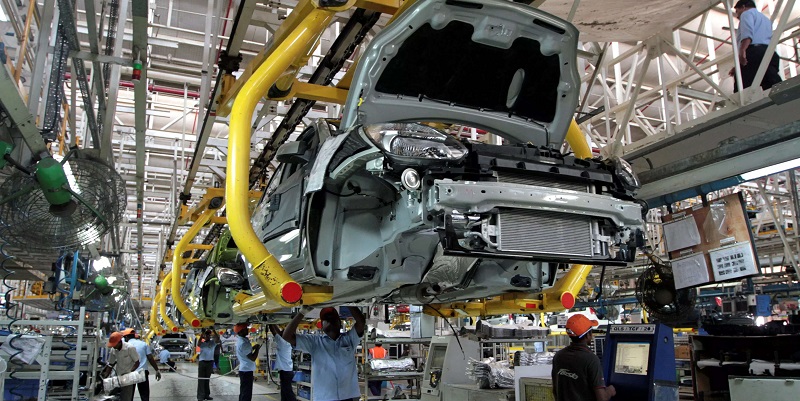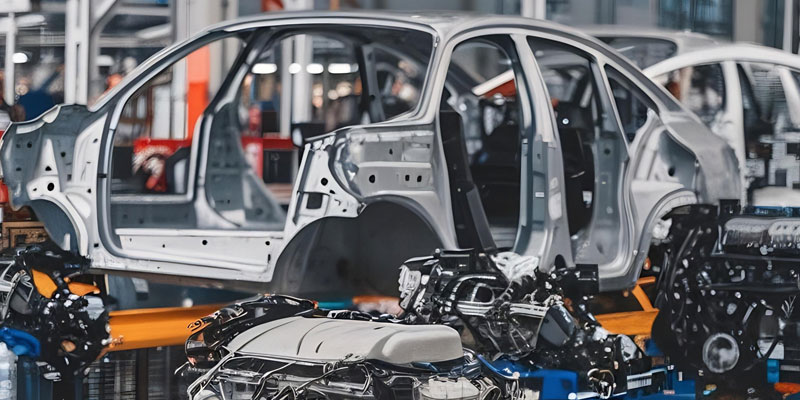Schedule a Call Back
Commercial vehicles to decline 3-6%; two-wheelers to grow 7-9% in FY25 India
 Industry News
Industry News- Jul 11,24

The Indian automotive industry plays a vital role in the country's
economic growth, including vehicles that cater to various needs and sectors.
Two key segments within this industry are two-wheelers and commercial vehicles
(CVs). Both segments have experienced significant transformations and faced
unique challenges over the past few years, particularly in the wake of the
COVID-19 pandemic.
Two-wheelers, primarily
motorcycles and scooters, dominate the Indian market due to their
affordability, fuel efficiency, and versatility. They are essential for
personal mobility, especially in urban areas. The rise in electric vehicle (EV)
adoption has further boosted this segment, reflecting a shift towards
sustainable options.
On the other hand,
commercial vehicles, including medium and heavy commercial vehicles (MHCVs) and
light commercial vehicles (LCVs), are critical for the logistics and
transportation sectors. The CV industry has seen fluctuating growth rates
influenced by economic conditions, government regulations, and infrastructure
developments.
Commercial
vehicles (CV):
- Growth trends:
-
FY22 and FY23: Strong growth of 30.7% and 28.7% respectively, driven by
post-COVID recovery.
-
FY24: Growth slowed to 0.7% due to several factors, including higher vehicle
costs from BS VI emission norms and election-related disruptions.
- Segment performance:
-
MHCVs: Growth driven by industrial and infrastructure demand.
-
LCVs: Boosted by e-commerce, but face challenges due to rising costs and high
interest rates.
- FY25 outlook: Expected decline of 3-6%
overall, with potential recovery in H2FY25 due to infrastructure projects and
interest rate cuts.
Two-wheelers:
- Growth trends:
-
FY23: Sales reached 19.51 million units, an 8% growth from the previous fiscal.
-
FY24: Continued growth at 9.8%, achieving 21.43 million units in sales.
-
Exports: Decline due to challenges in African markets, but recent recovery
observed.
- Segment performance:
-
Motorcycles: Dominant segment with steady growth; entry-level motorcycles show
slower growth compared to premium segments.
-
Scooters: Significant growth driven by urban demand.
- FY25 outlook: Expected growth of 7-9%,
driven by higher EV sales, recovery in exports, and favorable domestic
conditions.
Key drivers and challenges
Commercial vehicles:
- Drivers:
-
Infrastructure development: Post-monsoon projects to drive MHCV demand.
-
Government initiatives: Mandatory scrapping of older vehicles, interest rate
cuts.
- Challenges:
-
Cost pressures: Transition to BS VI norms, higher vehicle prices.
-
Economic conditions: Slowdown due to election-related disruptions, weak rural
demand.
Two-wheelers:
- Drivers:
-
EV adoption: Significant growth in electric two-wheeler sales due to lower
operating costs and government incentives (FAME II, EMPS 2024).
-
Urban demand: Scooters and premium motorcycles gaining popularity among urban
commuters.
- Challenges:
-
Export market volatility: Recovery dependent on stabilisation in key markets.
-
Competitive landscape: Continuous innovation and introduction of new models
required to maintain growth.
EV segment
Commercial vehicles:
- Growth: Notable increase in EV registrations,
especially in e-buses and LCVs.
-
E-buses: Surge from 217 units in FY21 to 3,400 units in FY24.
-
E-LCVs: Growth driven by last-mile logistics needs.
- Future outlook: Strong demand expected
due to government initiatives like the PM e-bus Sewa Scheme.
Two-wheelers:
- Growth: Remarkable increase in EV
sales, with a growth of 188% in FY23 and 30% in FY24.
-
Market share: EVs accounted for 4.54% of total two-wheeler sales in FY23.
- Future outlook: Continued growth
anticipated with the support of government policies and changing consumer
preferences.
Comparative insights
1. Market size and growth:
- Two-wheelers: Larger market with higher growth rates in recent years
compared to CVs.
- CVs: Experienced strong growth post-COVID but faced more volatility in
FY24.
2. Segment dynamics:
- Two-wheelers: Dominated by motorcycles with significant growth in
scooters and EVs.
- CVs: Growth concentrated in MHCVs due to infrastructure projects, with
LCVs facing cost-related challenges.
3. EV adoption:
- Two-wheelers: Rapid adoption with increasing market share and strong
government support.
- CVs: Slower adoption but significant growth in specific segments like
e-buses and LCVs.
4. Challenges:
- Two-wheelers: Export market instability, need for continuous
innovation.
- CVs: High vehicle costs, economic and infrastructure-related
slowdowns.
Conclusion
The two-wheeler industry in India is set
for continued growth, driven by strong domestic demand and increasing adoption
of EVs. In contrast, the CV sector, while facing short-term challenges, shows
potential for recovery in the latter half of FY25,. This is provided they will
be supported by infrastructure projects and favourable financing conditions.
Both sectors are crucial to India's automotive landscape, with their respective
dynamics offering unique opportunities and challenges. However, soaring prices,
road accidents, unemployment and diminishing demand keeps the future of the
automotive industry uncertain.
(Data courtesy: CareEdge Ratings)
Related Stories

Engineering India’s Next Phase of Growth with Responsibility: Amit Sharma
Amit Sharma, MD and CEO, Tata Consulting Engineers (TCE), outlines TCE's strategy to support India’s next phase of industrial growth through integrated engineering, nuclear and digital capabilitie..
Read more
EV transition and tariff wars redefine India’s auto components play
India’s auto component industry is poised to hit $ 145 billion by FY30 from $ 80 billion in FY25. Yet high US tariff, EV transition and heavy reliance on imports from China expose vulnerabilities,..
Read more
India EV Battery Demand to Surge 14-Fold by 2032: CES Report
CES says India’s EV battery demand may rise from 17.7 GWh in 2025 to 256.3 GWh by 2032, driven by electrification, new models, fuel prices and policy support shaping growth over next seven years t..
Read moreRelated Products

Automotive Oil Pump
Kalpak Auto Pvt Ltd offers a wide range of
automotive oil pump.
Tata Motors unveils facilities for development of Hydrogen propulsion tech
Tata Motors, India?s largest automobile company, unveiled two state-of-the-art & new-age R&D facilities for meeting its mission of offering sustainable mobility solutions. The unveilings constitute of Read more
Tata Motors plans petrol powertrain for Harrier and Safari SUVs
Tata Motors is in the process of developing a new petrol powertrain for its premium sports utility vehicles, the Harrier and Safari, as confirmed by a senior company official. Currently, these models Read more













